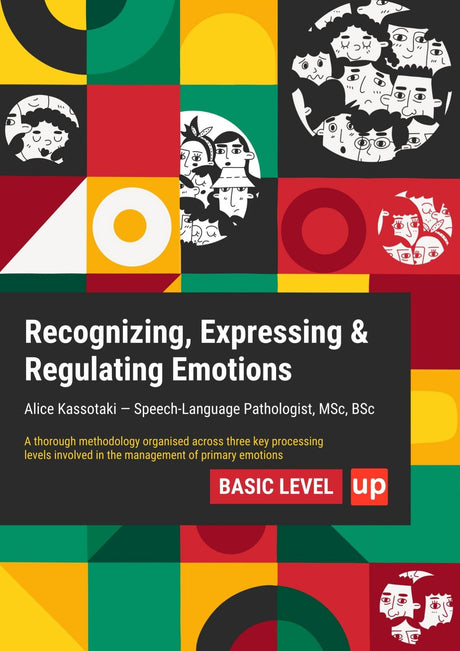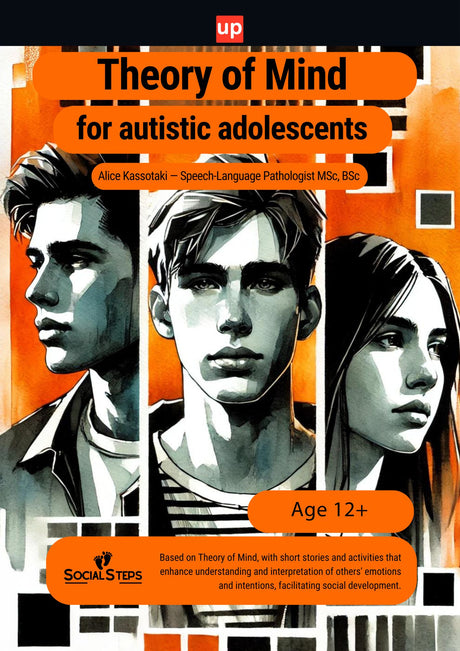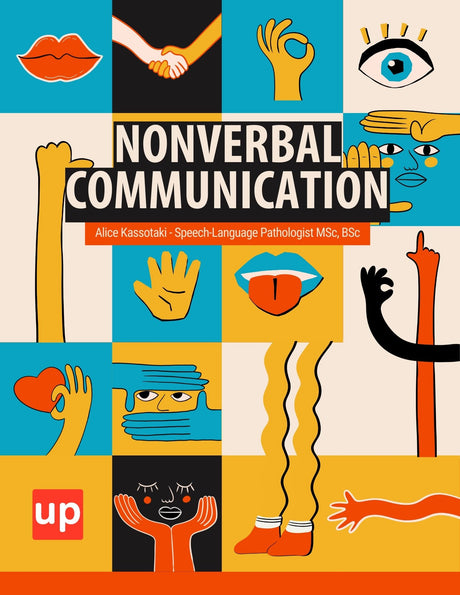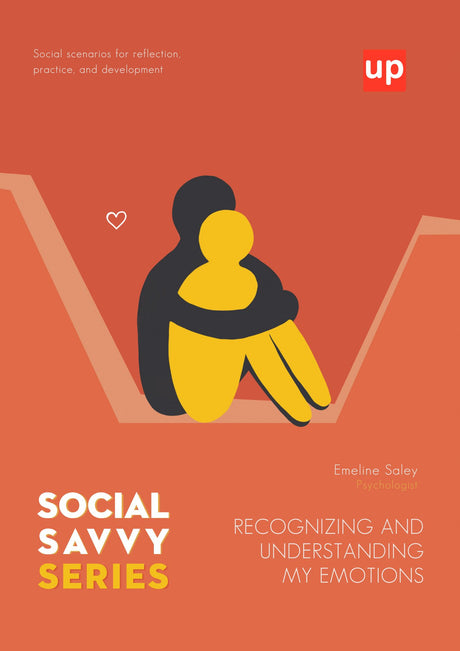Navigating social interactions is a complex yet essential part of human life, but for individuals with autism, these interactions often present unique challenges. Understanding autism involves recognizing the differences in how social skills manifest and the obstacles that can arise in communication and connection. This article delves into the fundamental social scenarios that can aid in skill-building and relationship development for those with autism.
Key Takeaways
- Social scenarios for autism provide essential opportunities to practice and develop social skills in a structured and supportive environment, helping individuals with autism navigate complex social interactions more effectively.
- Role-playing, social stories, and visual supports are powerful tools that enhance communication skills, emotional regulation, and understanding of social cues, contributing to greater confidence and independence in real life settings.
- Tailoring social skills activities to a child's age, developmental level, and consistent routine, along with professional support and family involvement, maximizes the autism benefit by fostering meaningful relationships and improving overall social functioning.
Understanding Social Scenarios for Autism and Social Skills

Understanding autism involves recognizing that social skills are crucial for individuals on the autism spectrum. Social skills development often includes direct instruction and practice in realistic settings. Techniques like role-playing and positive reinforcement are common in teaching these skills. For children with autism, social interactions can be challenging. Structured activities and autism games can help them learn to cooperate and share with peers. Encouragement from parents and caregivers is essential, as progress requires patience and consistent practice. Autism treatment, including tailored interventions like ABA therapy, plays a significant role in developing social skills. By integrating social skills games into daily routines, children with autism can develop the ability to form friendships and engage in meaningful relationships.
Defining Social Skills in the Context of Autism
Social skills are the foundation of communication and interaction for children with autism. These essential skills often require direct instruction and practice in realistic settings. Evidence-based interventions, like Social Skills Training (SST), use modeling and role-play to enhance social abilities. For many children with autism, explicit instruction is crucial. They need structured opportunities, like group therapy and behavioral rehearsals, to practice these skills. Using Social Stories can help a child understand challenging social situations by providing clear language and personalized narratives. By building on these strategies, children can improve their interactions and communication, aiding them in forming relationships with peers and helping a child learn to manage their emotions effectively.
Common Challenges in Social Interactions for Individuals with Autism
Individuals with autism frequently encounter challenges in social situations. These challenges can make it hard for them to connect with others, impacting their daily life. Many autistic children struggle with understanding social cues, which can affect their ability to establish friendships. Playing with peers can also be difficult, and responding appropriately in conversations is often a hurdle. Social skills training, particularly when started early, can greatly enhance their social capabilities. Tools like social stories, which use visuals and simple language, help individuals with autism understand complex interactions. Introducing different emotions through photographs can also play a crucial role in social skills training. By addressing these challenges, children with autism can learn to navigate social environments more effectively.
Emotional and Non-Verbal Aspects of Social Skills
Emotional and non-verbal aspects of social skills are fundamental for effective communication and interaction. Emotional regulation strategies, such as recognizing and managing different feelings, are essential for developing social skills. Non-verbal communication, including body language and facial expressions, plays a significant role in social interactions. Teaching social skills that encompass both emotional regulation and non-verbal communication can help individuals with autism navigate complex social interactions and build stronger relationships. By understanding and interpreting body language and facial expressions, children with autism can improve their social interactions and respond more appropriately in various scenarios.
Emotional Regulation in Social Interactions
Emotional regulation is the ability to recognize, understand, and manage emotions during social interactions. For individuals with autism, emotional regulation can be particularly challenging, impacting their ability to interact effectively with others. Implementing emotional regulation strategies, such as deep breathing and visualization, can help manage emotions and develop better social skills. Practicing conversation skills and engaging in role-playing scenarios are also effective methods for improving emotional regulation. These activities provide a safe environment for individuals with autism to practice managing their emotions, leading to more successful social interactions and enhanced communication skills.
Non-Verbal Communication and Cues
Non-verbal communication, including body language and facial expressions, is a critical component of social interactions. Individuals with autism may find it challenging to interpret non-verbal cues, which can affect their ability to interact effectively with others. Teaching non-verbal communication skills, such as recognizing and interpreting body language and facial expressions, can significantly improve social skills. By understanding these non-verbal cues, individuals with autism can navigate complex social interactions more effectively, enhancing their ability to communicate and build relationships. Practicing these skills in various scenarios helps reinforce learning and boosts confidence in social settings.
The Role of Social Scenarios in Skill Development

Social scenarios play a crucial role in supporting children with autism. By incorporating these scenarios into daily routines, children can improve their communication skills and enhance their emotional regulation. Perspective-taking activities within these scenarios encourage children to understand how their actions impact others, which in turn boosts their social skills. These activities often include direct instruction and opportunities for practice in realistic settings. This structured approach helps children with autism learn essential social behaviors. Additionally, family members play a significant role in this process, as these games not only help autistic children improve their social interactions with peers but also positively impact their communication and relationships with family members. Personalized teaching stories are also used to visually represent these scenarios, aiding in the comprehension of social interactions.
How Role-Play Enhances Social Understanding
Role-playing activities offer a supportive environment for children with autism to practice social skills. In a controlled setting, they rehearse interactions such as greetings and conversations. This practice helps them learn to make eye contact and take turns during discussions. Individuals with high functioning autism may face unique challenges in social skills training, as their ability to interpret social cues can differ significantly from those with more severe forms of autism. Through role-playing, children also improve their ability to interpret body language and emotional expression, such as happiness or sadness. Additionally, structured sessions aid in developing problem-solving skills and managing anxiety in new social environments. Overall, role-play is a beneficial tool for enhancing social understanding.
The Use of Social Stories and Their Impact
Social stories are engaging narratives that help children with autism navigate social situations. These stories offer clear examples of behaviors and expected interactions. They address various topics like making eye contact and being patient. By integrating social stories with cognitive-behavioral strategies, there's evidence they enhance social understanding. The structured nature of these narratives includes descriptive and directive cues, allowing children to practice appropriate social responses mentally. When combined with role-playing and visual aids, social stories provide a supportive framework for developing communication and essential social skills.
Key Social Scenarios for Practice
Implementing social scenarios is key for supporting individuals with autism. These scenarios help them navigate everyday situations like interactions with peers or conflict resolution. By using tools such as Social Stories, individuals with autism can learn essential skills in understanding social rules and behaviors by observing and interacting with other children. Social scenarios often involve role-play and social games, which offer practical experiences in structured environments. These activities help children with autism build effective communication skills and meaningful relationships. Professional support is crucial in these activities, as it helps tailor the interventions to each child's unique needs, ensuring they receive the guidance necessary to improve their social skills. Through engaging short stories and WH questions, participants can boost their listening and comprehension abilities. This approach lays the groundwork for improved social skills development and confidence in social settings.
Greeting and Introducing Oneself
Greeting and introducing oneself is a fundamental social skill. For individuals with autism, practicing these interactions can be empowering. Role-playing scenarios, such as saying “hello” or introducing themselves, provide a risk-free environment to practice. These scenarios often involve simple greetings, which are expanded as confidence grows. By engaging in these activities, and with caregivers who provide guidance, individuals with autism can build foundational social skills. Over time, they may transition from basic greetings to more complex interactions. This gradual approach helps to reduce anxiety about meeting new people and increases their ability to interact comfortably in everyday situations.
Navigating a Conversation
Navigating a conversation can be challenging for many individuals with autism. Role-playing provides a supportive environment to practice conversational skills. Simple topics like talking about the weather or weekend plans are excellent starting points. These activities encourage asking questions, starting conversations, and responding in appropriate ways. Role-playing helps individuals with autism understand social cues and how to express emotions during conversations. Visual aids and Social Stories are valuable tools in these scenarios, helping participants visualize their responses. By practicing conversation skills in this structured format and through real world situations, individuals can improve their social communication and confidence in interacting with others.
Ordering Food in Public Places

Navigating public settings, like ordering food, can be daunting for individuals with autism. Practicing this scenario helps build confidence and independence. Role-playing ordering food at a restaurant involves understanding the process of choosing items, placing orders, and expressing preferences. Visual aids can assist in remembering steps and responses during these interactions. Rehearsing in a controlled environment allows individuals to respond appropriately and manage sensory inputs. Engaging in these scenarios develops essential life skills, making everyday interactions smoother. By mastering this skill, individuals with autism can actively participate in community activities with increased confidence.
Conflict Resolution Techniques
Handling conflict is a vital skill for social development, especially for individuals with autism. Role-playing disagreements allows participants to practice expressing feelings and finding peaceful solutions. Techniques like using conflict resolution task cards can guide children through these processes. These cards provide prompts for articulating feelings or suggesting compromises. Social scenario cards also play a crucial role in practicing conflict resolution techniques. They fit well into Social Skills Training and promote effective communication solutions. By learning these skills in safe, structured settings, individuals with autism can develop abilities to handle real-life social conflicts better, which in turn enhances their self-esteem.
Understanding and Expressing Emotions
Interpreting and expressing emotions can be complex for autistic children. They often require explicit instruction, which can be supported through photographs depicting emotions. Role-play allows these individuals to practice recognizing and responding to different facial expressions. Adults modeling these behaviors can serve as powerful learning examples, helping children understand social cues. Engaging in calming activities, like coloring, aids in managing emotional and sensory overwhelm. Furthermore, tools like calm-down cards provide strategies for emotional and self regulation. With these resources, children with autism learn to handle strong emotions, enabling them to interact more effectively in various social settings.
Utilizing Technology and Digital Tools
Technology has become an essential tool in helping children with autism develop social skills. Behavioral Intervention Technologies (BITs) offer a modern approach by using digital platforms like computer programs and therapeutic robots. These tools can reduce anxiety and distractions, providing a safe environment for practicing social scenarios. They are as effective as traditional face-to-face training but offer unique benefits. Speech therapy resources that combine speech therapy practices with social skills development are also valuable. Visual supports, when used thoughtfully, can enhance learning and improve social experiences. Free Social Skills Scenarios Worksheets and social skills activity also play a role. They present real-life challenges with questions that promote discussion and decision-making. This structured method improves communication skills and social behaviors, enhancing quality of life for those on the autism spectrum.
Apps and Online Resources for Social Skills

Apps and online resources are valuable tools for enhancing social skills in children with autism. They cover a broad range of topics, such as social communication and emotional regulation. These resources are suitable for ages 6 to 18, ensuring a wide reach. Their design includes visual supports, turning social experiences into learning chances. By engaging with these online resources, children can build their confidence. As they practice, they become more comfortable in social settings, improving everyday situations. These digital tools offer opportunities to teach children with autism to understand and navigate complex social concepts. Exploring these apps helps in social development and supports the formation of meaningful relationships.
Virtual Simulations for Real-Life Scenarios
Virtual simulations offer a structured approach to teach social-emotional learning (SEL). They present a problem-solution framework, making them easy to understand. These simulations include real-life scenarios designed to enhance social skills. Guided reflections and WH questions help students engage with content meaningfully. The aim is to teach essential skills like following directions and listening effectively.
Students engage in simulated interactions within virtual environments. This practice helps them understand social cues and emotions better. They gain confidence by role-playing, experiencing safe spaces to learn appropriate behaviors. Practicing in these settings improves their communication skills and emotional responses. Virtual simulations effectively support the social skills development of students with autism by preparing them for unexpected situations, ultimately enhancing their daily routines and interactions.
Visual Supports in Social Skills Training
Visual supports, such as pictures and symbols, are powerful tools in social skills training for individuals with autism. These supports help individuals understand and navigate complex social interactions by providing clear, visual representations of social scenarios. Implementing visual aids, such as social stories and visual schedules, can offer structure and routine, making it easier for individuals with autism to develop social skills. Social stories, in particular, break down social interactions into manageable steps, helping children understand expectations and appropriate behaviors. By incorporating visual supports into social skills training, individuals with autism can improve their social interactions and overall quality of life, gaining confidence in their ability to navigate various social situations.
Evidence-Based Interventions
Evidence-based interventions are essential for supporting children with autism in social settings. One such intervention is Social Skills Training (SST), which uses methods like modeling, role-play, and positive reinforcement. These techniques help children with autism to improve social situations by offering them the chance to practice in supportive environments. SST often includes structured group activities where children engage with peers to boost their communication skills. Another innovative approach is Behavioral Intervention Technologies (BITs), which provide a distraction-free platform for social practice. BITs, such as digital platforms and therapeutic robots, are as effective as traditional methods and help reduce anxiety during social scenarios. Integrating these social skills activities into daily routines plays a crucial role in enhancing the social development of children with autism.
Peer-Mediated Strategies
Peer-mediated strategies are an effective way to support individuals with autism in developing social skills. By involving peers in structured group activities, children with autism can practice essential social skills in a meaningful environment. This method involves peer interactions that make children comfortable while trying new social responses. Social Skills Training incorporates techniques like modeling and role-play. Positive reinforcement in peer settings helps children with autism develop confidence in social scenarios.
In peer-mediated strategies, behavioral rehearsal plays a crucial role. It allows children to safely explore various social responses. Through continuous practice, children learn how to initiate play, give compliments, and solve problems during interactions. This approach helps children with autism develop communication skills needed in everyday situations. The supportive environment aids in building meaningful relationships with peers. Over time, these strategies lead to improved social behaviors and increased confidence in social settings.
Behavioral Technologies and Their Benefits
Behavioral technologies offer innovative methods for teaching social interaction to individuals with autism. Role-playing through these technologies allows practicing real-life situations, aiding in the enhancement of communication skills. Positive reinforcement in behavioral approaches is crucial as it motivates children to engage more within social settings. This method fosters observable improvements in social behavior, making activities more appealing.
These technologies, when integrated into social skills training, offer significant benefits. They help improve social participation and form better peer relationships. A structured environment allows children to understand and practice social themes effectively. Additionally, predictable routines play a vital role in social development. They reduce anxiety related to unexpected changes and offer security.
Behavioral technologies leverage visual tools like personalized teaching stories, which aid understanding complex social interactions. Visual representation simplifies social concepts, allowing individuals with autism to grasp them better. By focusing on these methods, behavioral technologies support a marked improvement in social skills development, ultimately leading to better day-to-day interactions.
Tailoring Interventions to Individual Needs
Supporting children with autism in social settings requires personalized strategies. Customized interventions are essential as they focus on the unique needs of each child. These tailored approaches are part of a broader strategy that enhances social capabilities among children with autism. Programs like Applied Behavior Analysis (ABA) target vital social, communication, and behavioral skills. By crafting personalized learning plans, we can create nurturing environments that promote skill growth and social inclusion for autistic children. These individual methods ensure children learn social skills effectively in both structured and everyday settings, fostering meaningful relationships and improved social interactions.
The Importance of Personalized Learning Plans
Personalized learning plans are a game-changer for children with autism. They employ visual aids such as personalized teaching stories, which help children understand and predict social scenarios more efficiently. Computer-based social skills programs are tailored to meet the specific needs of each child. Incorporating visual aids like charts or electronic devices into lessons can simplify the grasp of social concepts. Additionally, apps and games provide a platform for children to practice at their own pace. These digital tools offer interactive features that reinforce positive behaviors, making social learning more accessible and effective.
Balancing Structure with Adaptability in Activities
Adaptive play methods are crucial in social skills development, especially for children on the autism spectrum. They blend structured learning with spontaneous social interactions, often using cooperative games. Role-playing activities provide a safe environment where children can practice social situations. This combination of structure and real-world application is beneficial. Engaging children in community activities through structured programs enhances happiness and fosters friendships. Visual tools used in social skills training can offer guidance while also promoting flexible and engaging environments. Tailoring activities to children’s interests ensures they find the learning process more engaging and effective, balancing structure with adaptability.
Supporting Caregivers and Educators
Caregivers and educators play a vital role in enhancing the social skills of children with autism. By creating structured social engagement opportunities, they can support autistic children's social development. Role-playing different scenarios is one effective strategy. This approach provides a safe environment for children with autism to practice social interactions. Social skills games and activities are also key tools that can be woven into daily routines. These activities target social development while making learning fun and interactive. Visual aids like Social Stories and pictograms break down complex social situations into manageable parts. Such tools help children better understand and learn appropriate social behaviors. Continuous encouragement from caregivers and educators is essential. It helps create an atmosphere of support, fostering a positive learning environment. Strategies like cognitive-behavioral interventions combined with Social Stories have shown to improve social interactions. This highlights the significant influence caregivers and educators can have on social skills development for autistic children.
Building Empathy and Acceptance in Learning Environments
Learning environments that promote empathy and acceptance are crucial for enhancing the social experiences of autistic children. Educating peers about autism can create a supportive space by fostering understanding and respect. Teaching about autistic figures throughout history can broaden perspectives, helping students appreciate diverse experiences. Games that encourage perspective-taking, such as "How Would You Feel?", help autistic children develop empathy. These activities also advance their understanding of body language, an essential skill for meaningful relationships. Incorporating autism awareness symbols in classrooms can spark conversations about neurodivergence. This promotes acceptance and understanding amongst students. Additionally, interactive technology like VR and video-based learning provides immersive experiences. These tools enable autistic individuals to practice various social scenarios, enhancing their empathetic skills. As schools embrace these methods, the path to acceptance and inclusion becomes clearer, benefiting all students involved.
Strategies for Early Intervention and Continuous Support
Early intervention is crucial for children with autism, as it leverages brain plasticity to enhance social and communication skills. Starting these interventions from or before preschool can have a meaningful impact. Early programs are more likely to improve peer interactions by helping children understand social cues effectively. Direct instructions in realistic practice settings play a significant role in social skills development. This approach aids children in creating a social map, which is essential for navigating social settings. Encouragement and support from parents and caregivers are equally vital. Through patience and continuous practice, these relationships can greatly aid in social development. Active engagement in social skills activities supports individuals in improving communication and emotional regulation. This prepares them for more confident interaction in various social environments. Continuous support ensures that these social skills are developed and refined throughout their growth, leading to better outcomes.
Conclusion
Social scenarios for autism are invaluable tools that provide structured and supportive opportunities for individuals with autism to develop essential social skills. Through role-playing, social stories, visual supports, and the use of technology, children and adults on the autism spectrum can learn to communicate effectively, interpret social cues, and manage emotions in real life situations. Tailoring these activities to a child's age, developmental level, and consistent routine, combined with professional support and family involvement, maximizes the benefits of autism treatment. By practicing social skills in a variety of everyday scenarios, individuals with autism can gain confidence, improve their social interactions, and build meaningful relationships, leading to a more fulfilling and connected life.
Frequently Asked Questions (FAQ)
1. What are social skills, and why are they important for individuals with autism?
Social skills refer to the abilities necessary for effective communication and interaction with others. They are crucial for individuals with autism as they help in developing meaningful relationships, understanding social cues, and navigating social situations. Improving these skills can lead to increased self-confidence and better integration into various social environments.
2. How can role-play scenarios aid in developing social skills for autistic individuals?
Role-play scenarios provide a controlled environment where individuals with autism can practice social interactions. By simulating real-life situations, role-playing helps them understand body language, social norms, and appropriate responses, enhancing their communication skills and emotional understanding.
3. What are social stories, and how do they benefit children with autism?
Social stories are engaging narratives that depict social scenarios in a structured format. They help children with autism understand expectations and appropriate behaviors in different settings. By using visual supports and simple language, social stories make complex social interactions more comprehensible, aiding in emotional regulation and social skills development.
4. How do technology and digital tools support social skills development in autism?
Technology, including apps and online resources, offers interactive and engaging platforms for practicing social skills. These tools provide visual supports, simulations, and role-playing opportunities, allowing children to learn at their own pace. They are effective in building confidence and enhancing communication skills in a safe, structured environment.
5. What is the role of peer-mediated strategies in teaching social skills to autistic children?
Peer-mediated strategies involve engaging peers in structured activities to support social skills development. This approach allows autistic children to practice social interactions in a natural setting, improving their communication and relationship-building skills. It fosters an inclusive environment where children learn from each other through modeling and positive reinforcement.
6. How can caregivers and educators create supportive environments for social skills development?
Caregivers and educators can create supportive environments by incorporating structured social skills activities into daily routines. Using tools like role-play, social stories, and visual aids, they can provide consistent practice opportunities. Encouragement and positive reinforcement are key in helping children with autism gain confidence and improve their social interaction skills.
Original content from the Upbility writing team. Reproducing this article, in whole or in part, without credit to the publisher is prohibited.
References
- American Psychiatric Association. (2013). Diagnostic and Statistical Manual of Mental Disorders (5th ed.). Arlington, VA: American Psychiatric Publishing.
- Attwood, T. (2007). The Complete Guide to Asperger's Syndrome. Jessica Kingsley Publishers.
- Gray, C. (1994). The New Social Story Book. Future Horizons.
- Howlin, P., Baron-Cohen, S., & Hadwin, J. (1999). Teaching Children with Autism to Mind-Read: A Practical Guide for Teachers and Parents. Wiley.
- Koegel, R. L., & Koegel, L. K. (2006). Pivotal Response Treatments for Autism: Communication, Social, & Academic Development. Brookes Publishing.
- National Research Council. (2001). Educating Children with Autism. National Academy Press.
- Rogers, S. J., & Dawson, G. (2010). Early Start Denver Model for Young Children with Autism: Promoting Language, Learning, and Engagement. The Guilford Press.
- Volkmar, F. R., & Wiesner, L. A. (2009). A Practical Guide to Autism: What Every Parent, Family Member, and Teacher Needs to Know. Wiley.









